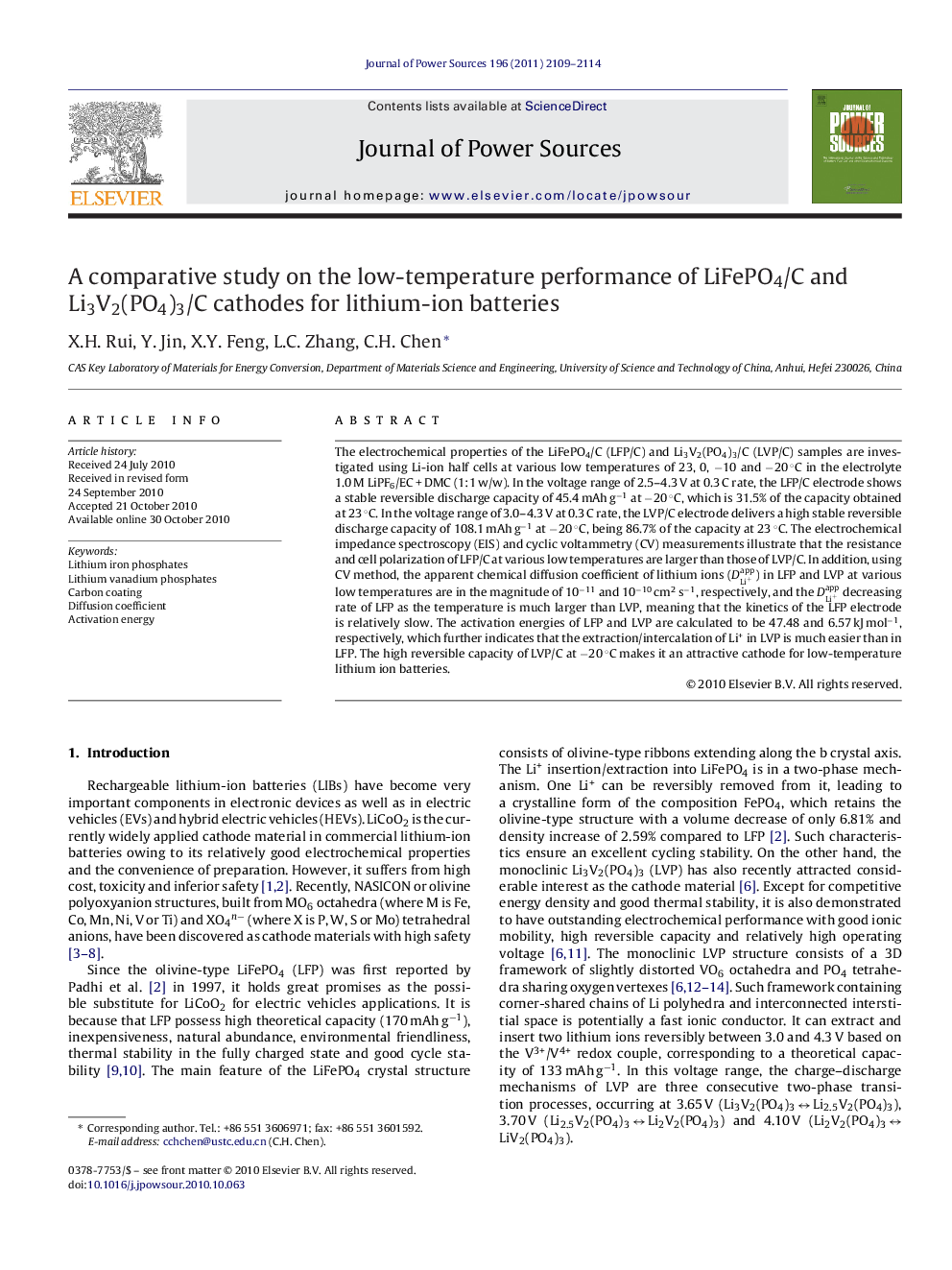| Article ID | Journal | Published Year | Pages | File Type |
|---|---|---|---|---|
| 1288876 | Journal of Power Sources | 2011 | 6 Pages |
The electrochemical properties of the LiFePO4/C (LFP/C) and Li3V2(PO4)3/C (LVP/C) samples are investigated using Li-ion half cells at various low temperatures of 23, 0, −10 and −20 °C in the electrolyte 1.0 M LiPF6/EC + DMC (1:1 w/w). In the voltage range of 2.5–4.3 V at 0.3 C rate, the LFP/C electrode shows a stable reversible discharge capacity of 45.4 mAh g−1 at −20 °C, which is 31.5% of the capacity obtained at 23 °C. In the voltage range of 3.0–4.3 V at 0.3 C rate, the LVP/C electrode delivers a high stable reversible discharge capacity of 108.1 mAh g−1 at −20 °C, being 86.7% of the capacity at 23 °C. The electrochemical impedance spectroscopy (EIS) and cyclic voltammetry (CV) measurements illustrate that the resistance and cell polarization of LFP/C at various low temperatures are larger than those of LVP/C. In addition, using CV method, the apparent chemical diffusion coefficient of lithium ions (DLi+app) in LFP and LVP at various low temperatures are in the magnitude of 10−11 and 10−10 cm2 s−1, respectively, and the DLi+app decreasing rate of LFP as the temperature is much larger than LVP, meaning that the kinetics of the LFP electrode is relatively slow. The activation energies of LFP and LVP are calculated to be 47.48 and 6.57 kJ mol−1, respectively, which further indicates that the extraction/intercalation of Li+ in LVP is much easier than in LFP. The high reversible capacity of LVP/C at −20 °C makes it an attractive cathode for low-temperature lithium ion batteries.
